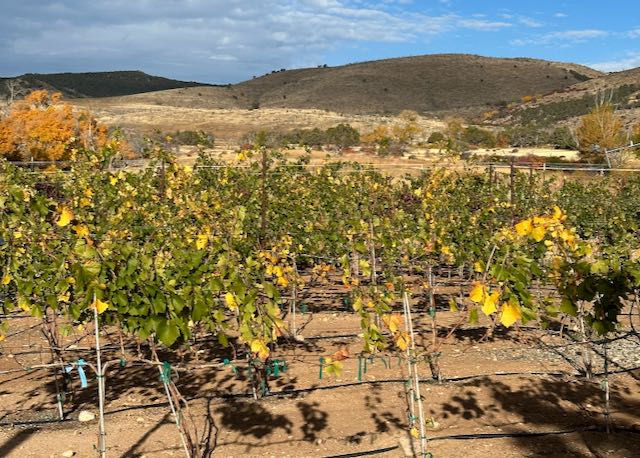Post-Harvest Vineyard Maintenance: Tips to Finish the Year Off Right (Grapevine Magazine)

Although the busy time of harvesting grapes is winding down or has ended for many vineyards, there’s not much time to sit back and relax before more critical work must be done. Many post-harvest vineyard tasks should be on every vineyard’s to-do lists to prepare for next year’s crop and sustain the longevity of the vineyard’s operations.
The Basics of Post-Harvest Vineyard Management
After the growing season ends and the grapes have been picked, grapevines go dormant and signal that it’s time to start preparing for next year. Some of the vital maintenance tasks to do after harvesting are removing bird netting, analyzing the soil with samples, repairing or replacing trellising and equipment, and planting a cover crop to reduce soil nutrient loss and control erosion. It is also the time of year to be proactive about pest control, consider irrigation strategy, stock up on new vines and put some thought into overall vineyard management strategy.
As vineyards wrap up harvest operations and prepare for winter, some specialists may be helpful for advice, products and services.
• Vineyard management companies
• Pest control companies
• Irrigation consultants
• Nurseries
• Trellising companies
• Soil companies
Check and Repair Trellising
Trellising is a big part of post-harvest maintenance, because, in most climates, grapevines need supports to secure the wood and summer shoots within the training system, and ensure proper ventilation and exposure.
“Furthermore, the trellis helps to improve the implementation of viticulture work and facilitate mechanized procedures, like machine harvesting,” said Oliver Asberger, Vice President of PA Trellising Systems in Charlottesville, Virginia. “If a trellis is not designed right or maintenance is not kept up, it will lead to deficiencies in vineyard performance and higher costs in labor and parts.”
Asberger told The Grapevine Magazine that two primary signs of a good trellis are tight wires and stable posts. “Each growing season, the trellis experiences pressure on its systems, and that leads to loosening of parts or even breakage,” he said. “To optimize the performance and keep costs down, the trellis is best fixed when the pressure is off and the vine is dormant.”
PA Trellising Systems is a distribution company, rather than a vineyard management company, but it can offer advice on how to modify and repair existing materials if a vineyard notices a problem with its trellising system.
“When it comes to new establishments, we guide the buyer to what options are available and optimal for post models, forms of galvanization, size and length, inside or outside hooks, set depth and use of accessories, like cross-arms or wire extenders,” Asberger said. “Also, we are able to customize our posts to offer the best solutions for a unique growing situation.”
Another company that provides trellising products is Gripple, which offers the Gripple Plus for simple push-fit splicing, locking and tensioning system that is up to five times faster to install than traditional methods for broken trellis wires. Gripple joiners and tensioners have patented ceramic rollers that deliver a better grip and non-corrosive hold on the high tensile wires that are used in vineyards today. They can be used in conjunction with the Gripple Torq Tool or Gripple Contractor Tool to return tension to slacked or broken trellis wires quickly.

